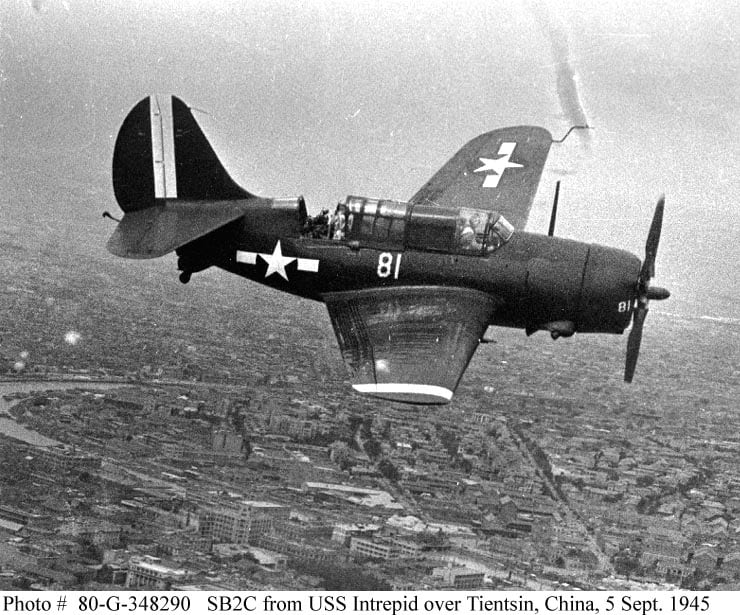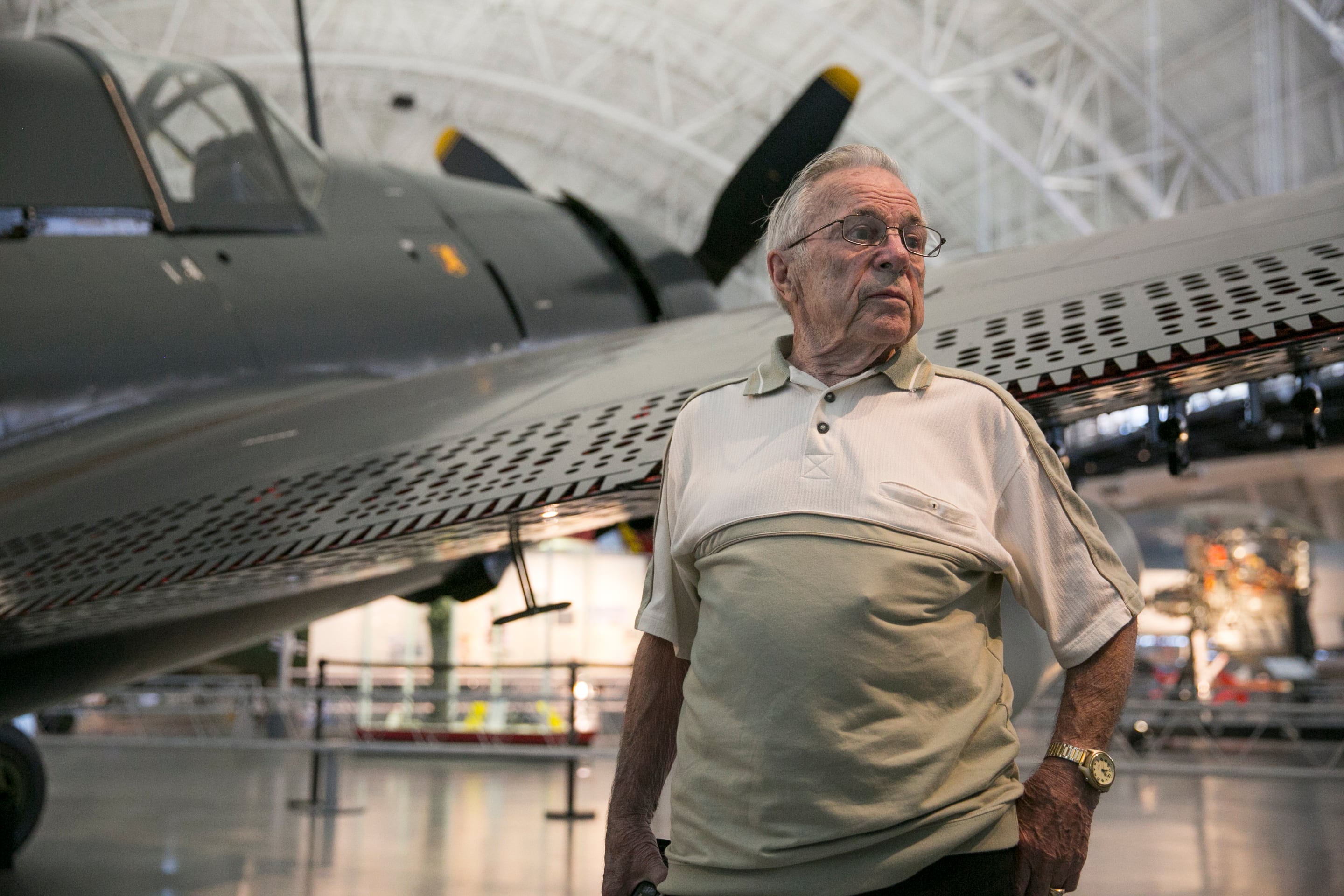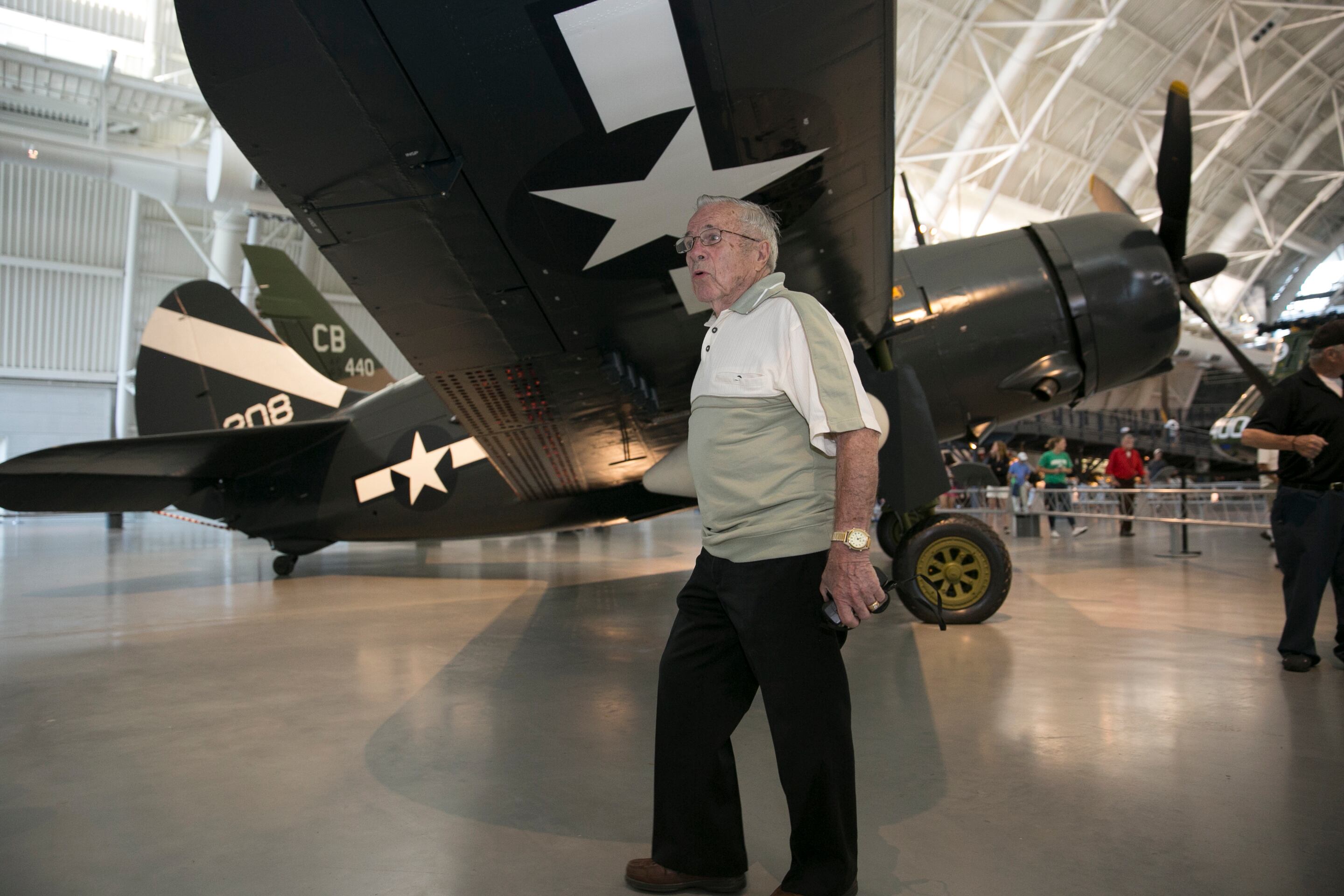Nearly 70 years to the day after Japan surrendered to the Allies, ending World War II, a Pacific Helldiver was reunited with his aircraft.
As 91-year-old Art Plumadore walked down the ramp into the exhibition hall of the Steven F. Udvar-Hazy Center Smithsonian National Air and Space Museum in Chantilly, Va., an annex of the Smithsonian National Air and Space Museum, on Aug. 10, he stopped and gazed at the aircraft below — a meticulously restored Curtiss SB2C-5 Helldiver.
"I can't believe it!" he exclaimed, turning to Dr. Jeremy Kinney, curator of American Military Aviation, 1919-1945. "After all this time, I can't believe it."
In the final months of the war, Plumadore, then an aviation radioman second class, flew in the back seat of this very aircraft.

Curtiss SB2C-5 Helldiver scout-bomber, of Bombing Squadron Ten (VB-10), flies over Tientsin, China, as the city is reoccupied by the Allies, Sept. 5, 1945.
Photo Credit: Navy photo via National Archives.
Plumadore saw limited action in the aircraft, known as "the Big-Tailed Beast" or more simply, "Beast." After signing up in 1943, he trained in Jacksonville and at Naval Air Station DeLand, Florida, then headed to the Pacific theater. He saw brief action over Tinian, strafing targets with his .30-caliber machine guns, and over Saipan.
The Helldiver, a single engine, carrier-based scout bomber, deserved its name. Plumadore vividly remembers the feeling of flying above 20,000 feet, then hurtling down directly at a target to drop ordnance before leveling and flying off at about 3,000 feet. It was a scary ride, he said.
Plumadore and his pilot, Lt. George "Knox" Converse, were assigned to the "Battling Beasts" of Bombing Squadron 92 aboard the aircraft carrier Lexington. They expected to participate in the assault on the Japanese mainland in the last stages of the war, an attack that undoubtedly would have claimed hundreds of thousands, if not millions, of lives. President Truman's decision to drop atomic bombs on Hiroshima and Nagasaki, ending the war, came as a huge relief, Plumadore said.

Plumadore, who left the Navy as an aviation radioman 2nd class, said he would have made first class, "but I liked to raise a little hell and got caught."
Photo Credit: Mike Morones/Staff
He spent most of the next year as part of the occupation forces before sailing out of Tokyo Bay aboard the Lexington.
As for the aircraft, it ended up sitting outside for years, then at Pensacola, before the Smithsonian acquired it in 1960, according to Dr. Jeremy Kinney, curator of American Military Aviation, 1919-1945. It was in bad shape.
The renovation, which took several years, was completed last year.
"During World War II, Navy bombing squadrons flew Helldiver dive-bombers against Japan from November 1943 to the war's end in September 1945," according to the Air and Space Museum's website. "After a prolonged development, about 30 Navy squadrons operated Helldivers aboard 13 carriers. Changes in carrier tactics, technology, and weapons made dive-bombing — delivering a bomb at a steep angle to increase accuracy — obsolete as the war progressed. The Helldiver was the last dive-bomber operated by the Navy and the last significant combat aircraft produced by Curtiss-Wright."

George Arthur Plumadore is reunited with his restored Curtiss SB2C Helldiver. Plumadore served as a radio operator and gunner in the Pacific during World War II.
Photo Credit: Mike Morones/Staff




